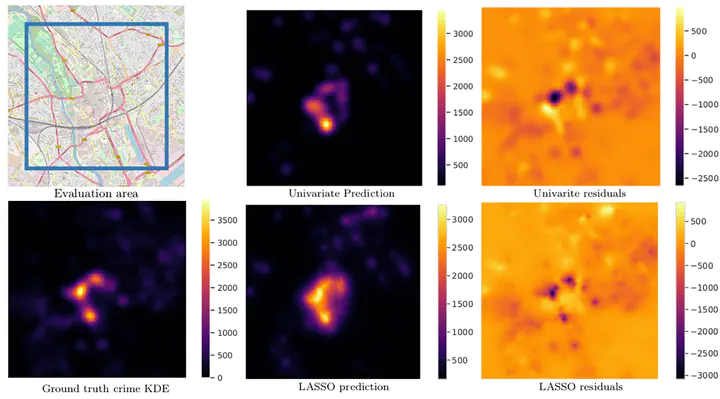
Abstract
The association between alcohol outlets and violence has long been recognised, and is commonly used to inform policing and licensing policies (such as staggered closing times and zoning). Less investigated, however, is the association between violent crime and other urban points of interest, which while associated with the city centre alcohol consumption economy, are not explicitly alcohol outlets. Here, machine learning (specifically, LASSO regression) is used to model the distribution of violent crime for the central 9 km2 of ten large UK cities. Densities of 620 different Point of Interest types (sourced from Ordnance Survey) are used as predictors, with the 10 most explanatory variables being automatically selected for each city. Cross validation is used to test generalisability of each model. Results show that the inclusion of additional point of interest types produces a more accurate model, with significant increases in performance over a baseline univariate alcohol-outlet only model. Analysis of chosen variables for city-specific models shows potential candidates for new strategies on a per-city basis, with combined-model variables showing the general trend in POI/violence association across the UK. Although alcohol outlets remain the best individual predictor of violence, other points of interest should also be considered when modelling the distribution of violence in city centres. The presented method could be used to develop targeted, city-specific initiatives that go beyond alcohol outlets and also consider other locations.